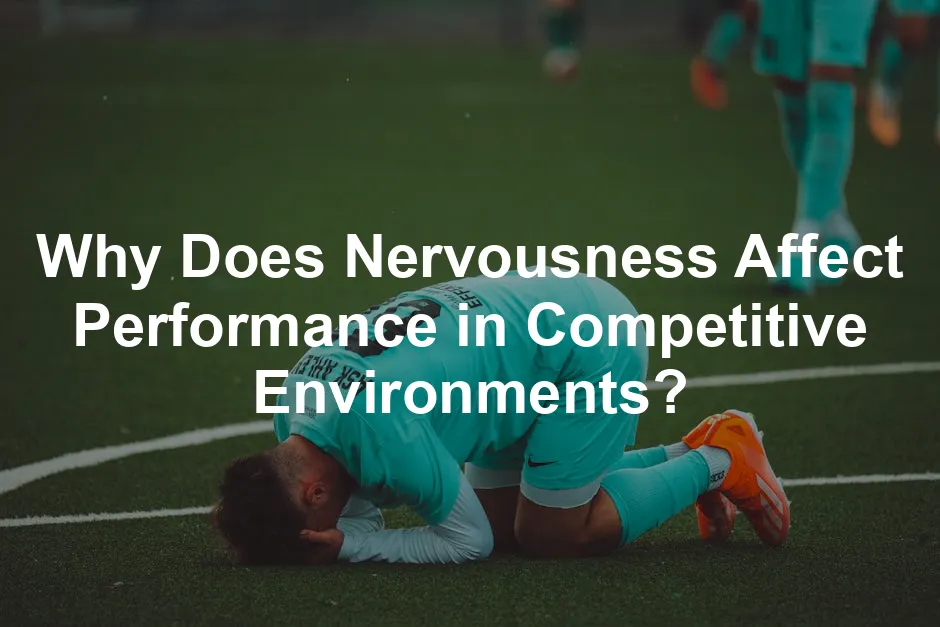
Why Does Nervousness Affect Performance in Competitive Environments?
Introduction
In the world of competition, nerves can be an unwelcome companion. Every athlete, from the rookie to the seasoned pro, has felt the icy grip of anxiety before a big event. It’s like standing at the edge of a diving board, stomach churning, unsure of whether to leap or retreat. While some athletes thrive under pressure, many find their performance hampered by their own jitters. But why does this happen?
Nervousness can stem from various sources. The fear of failure looms large, especially in high-stakes situations. Athletes may feel the weight of expectations, whether from coaches, fans, or themselves. This pressure can lead to a spiral of self-doubt, which is less than ideal when you need to focus and perform. The reality is that anxious thoughts can create a mental fog, making it difficult to concentrate and execute skills that have been honed through endless practice.
Physiologically, anxiety triggers the body’s fight-or-flight response. Heart rates soar, muscles tighten, and minds race—a cocktail of symptoms that can derail even the most well-prepared athlete. It’s like trying to perform a delicate ballet while a marching band plays loudly in the background. Even simple tasks can become monumental challenges when nerves take over.
Understanding the science behind this phenomenon is crucial. Research indicates that anxiety can diminish cognitive functions such as focus and memory. For example, when an athlete is distracted by nervous thoughts, they may forget crucial strategies or misinterpret cues from their environment. In competitive settings, even minor lapses in concentration can lead to costly mistakes.
Moreover, the environment plays a significant role in amplifying anxiety. Spectators, for instance, can evoke a sense of scrutiny that makes even the most confident athlete feel exposed. The loud cheers and jeers can create an emotional rollercoaster, pushing some athletes into a zone of heightened stress. This is especially true in individual sports, where the pressure is personal and palpable. Team sports, while providing some camaraderie, still present their own unique challenges, particularly when the stakes are high.
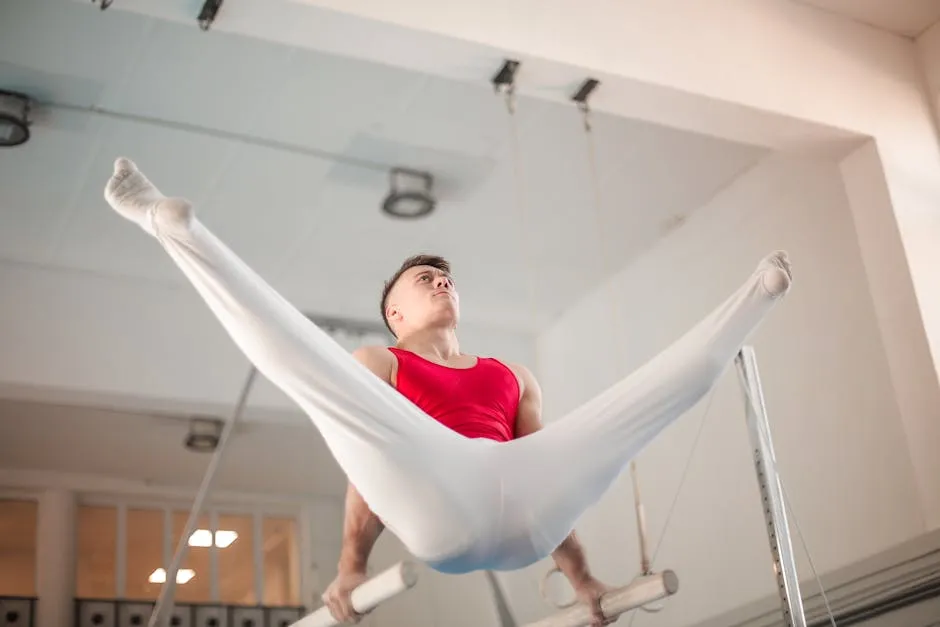
As we unpack these complexities, we will explore psychological theories that explain the mechanisms behind performance anxiety. From the Inverted-U Hypothesis, which suggests a sweet spot for optimal performance amidst anxiety, to the role of individual differences in coping strategies, understanding these dynamics can pave the way for effective management techniques.
Ultimately, the goal is to transform anxiety from an adversary into an ally. By learning to recognize and manage nervousness, athletes can regain control and harness their energy for peak performance. Join us as we continue this exploration into the intricate relationship between nervousness and competitive performance, revealing strategies to thrive in the face of anxiety.
Understanding Nervousness and Performance
The Nature of Nervousness
Nervousness is that familiar knot in your stomach before a big game. It’s a psychological state characterized by feelings of apprehension and fear. Many athletes experience this sensation, which can manifest in various ways—sweaty palms, racing heart, or a mind buzzing with “what-ifs.” Essentially, it’s your body’s way of preparing for perceived threats.
But not all anxiety is created equal. We can differentiate between trait anxiety and state anxiety. Trait anxiety is a characteristic of an individual, a tendency to respond with anxiety across many situations. On the other hand, state anxiety is a temporary condition, often triggered by specific events, like competitions. Understanding these differences is crucial in addressing how nervousness impacts performance.
Several psychological theories explain the intricacies of anxiety. The Inverted-U Hypothesis suggests that moderate levels of anxiety can enhance performance, but too much can lead to a decline. Imagine trying to balance on a seesaw; too much weight on one side, and you’re face-first in the dirt. Drive Theory posits that performance improves as arousal increases, but again, there’s a tipping point. If anxiety outweighs the drive, you may find yourself stumbling instead of soaring.
How Nervousness Impacts Performance
Nervousness can wreak havoc on cognitive functions. When anxiety strikes, distractions abound. Athletes may find themselves trapped in a whirlwind of negative self-talk. “What if I mess up?” or “Everyone is watching me!” Such thoughts can steal focus, turning a star athlete into a deer caught in headlights.
Physically, the effects are equally disruptive. Increased heart rates and muscle tension can leave athletes feeling fatigued even before they begin. Picture trying to run a race with a bag of bricks strapped to your back; that’s the reality of performance anxiety. This physiological response not only hampers coordination but can also lead to premature exhaustion.
Emotionally, the stakes are high. Fear of failure looms large, often leading to a significant loss of confidence. Athletes may find themselves wrestling with social anxiety, feeling exposed and vulnerable under the scrutiny of spectators. The pressure of competition can feel like a weight pressing down, stifling their spirit.
The Role of Competition
Competitive environments are ripe with stressors. The importance of the contest can amplify anxiety levels, especially when the stakes are high. Each athlete feels the pulse of pressure, whether it’s the glory of victory or the agony of defeat hanging in the balance.
Spectators play a significant role, too. Their presence can heighten anxiety, transforming a friendly game into a pressure cooker. Athletes may feel they are under a microscope, each movement scrutinized. Research shows that participants in individual sports often experience greater anxiety compared to their counterparts in team sports. The isolation of competing alone can amplify feelings of vulnerability.

Different types of sports also influence anxiety levels. In high-contact sports, the risk of injury looms large, adding another layer of stress. Athletes might hesitate to execute moves fully, fearing injury could become a reality. However, understanding these dynamics can empower athletes to manage their nerves effectively, turning anxiety into a driving force rather than a crippling foe.
Nervousness, while often viewed as a hindrance, can be reframed. By recognizing its roots and effects, athletes can develop coping strategies to channel nervous energy into focused performance. After all, every athlete has the potential to transform their anxiety into a powerful tool for success.
Coping strategies are essential for handling anxiety in daily life. why are coping strategies essential for handling anxiety in daily life
Factors Contributing to Performance Anxiety
Understanding why nervousness can dampen performance in competitive environments requires a closer look at the factors that contribute to performance anxiety. This anxiety can stem from individual differences, environmental influences, and age-related factors. Let’s unpack these elements to shed light on their impact.
Individual Differences
Personality traits significantly shape how athletes experience anxiety. Introverts, for instance, may feel overwhelmed in high-pressure situations. They often prefer controlled environments and may struggle with the unpredictability of competitions. Extraverts, on the other hand, thrive on social interaction. They may harness the energy of the crowd, using it to enhance their performance. However, too much excitement can lead to overstimulation and anxiety.
Experience also plays a crucial role. Novice athletes often feel more anxious than their seasoned counterparts. Inexperienced competitors may lack confidence in their abilities, intensifying feelings of nervousness. Conversely, seasoned athletes have built coping strategies over years of competition. They know how to channel anxiety into focus. Their familiarity with high-pressure situations can significantly mitigate performance anxiety, allowing them to perform at their best.
Environmental Influences
The environment in which competition takes place can greatly influence anxiety levels. Coaching styles and team dynamics are pivotal. A supportive coach fosters a positive atmosphere, encouraging athletes to take risks without fear of failure. On the flip side, a critical or overly demanding coaching style can exacerbate anxiety. Athletes may feel they must meet unrealistic expectations, leading to increased nervousness.
Team dynamics also play a part. In a cohesive team, athletes can rely on one another for support. This camaraderie can ease anxiety, as they feel they are not alone in facing the pressures of competition. However, if team dynamics are strained, anxiety can increase. Athletes might worry about letting their teammates down or fear negative judgment from peers.

The competitive environment itself, such as home versus away games, can also amplify anxiety. Playing at home usually provides a sense of comfort, as familiar faces and supportive fans surround the athletes. In contrast, away games can feel intimidating. The presence of opposing fans can create a hostile atmosphere, heightening anxiety and affecting performance.
To help manage these environmental stressors, consider using a Deep Breathing Exercise Ball. This simple tool can help athletes calm their nerves and regain focus before competition.
Age-Related Differences
Age significantly influences how athletes experience anxiety. Children and adolescents often grapple with performance pressure stemming from external expectations. They may fear disappointing parents or coaches, leading to heightened anxiety. Social evaluation also plays a crucial role; young athletes often worry about being judged by peers, which can further amplify their anxiety.
As athletes transition into young adulthood, they face new pressures. Balancing sports with academic or career aspirations can be daunting. The competitive landscape intensifies, and young adults may feel the weight of expectations to perform at higher levels. This transition can lead to increased anxiety as they navigate the uncertainties of their futures.
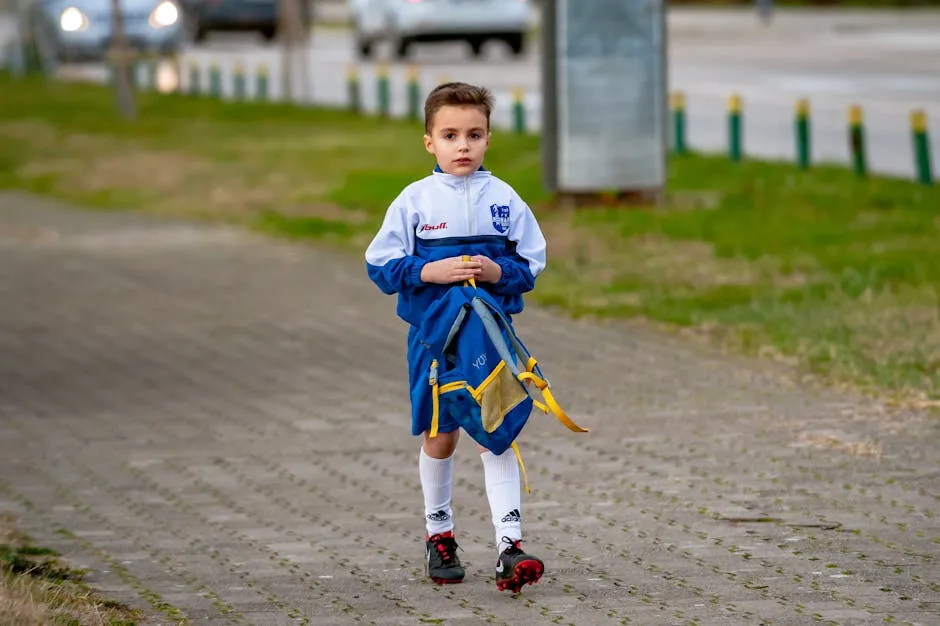
For seasoned athletes, anxiety manifests differently. Although they may have more experience, they still face performance expectations that can be daunting. They might feel pressure to maintain their status or meet the high standards set by themselves or others. Physical demands also become more pronounced as age-related limitations can exacerbate feelings of anxiety about performance.
In summary, performance anxiety is a multifaceted issue influenced by individual differences, environmental factors, and age. By understanding these contributors, athletes can better navigate their anxiety and find ways to channel it into improved performance. Acknowledging these elements not only aids athletes in overcoming their nerves but also equips coaches and support systems with the tools to foster a more positive competitive environment.
Strategies to Manage Anxiety
Anxiety can turn the thrill of competition into a daunting mountain to climb. Luckily, athletes can adopt various strategies to help manage this nervous energy. Here’s a look at some effective techniques.
Mental Techniques
Visualization is a powerful tool. Picture yourself performing flawlessly in your event. Imagine every detail—the crowd, the sounds, the victory dance. This mental rehearsal can build confidence and calm the nerves. For those looking for a deeper dive into mental strategies, consider reading The Mindful Athlete: Secrets to Pure Performance.
Positive self-talk is equally important. Replace negative thoughts with affirmations. Instead of “What if I fail?” think “I’ve trained for this!” A little pep talk can do wonders for self-esteem.
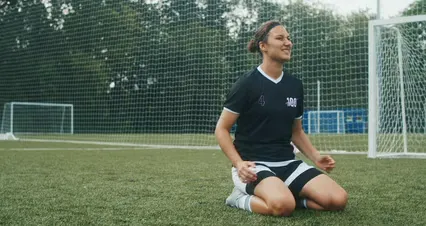
Breathing exercises are a must. Simple techniques can make a difference. Try inhaling deeply through your nose for four counts, holding for four, and exhaling through your mouth for six. Repeat this several times. It’s like giving your mind a mini vacation. For an extra boost, consider using Anxiety Relief Essential Oil Blend to enhance your relaxation experience.
Relaxation techniques, such as progressive muscle relaxation, can also help. Tense and then release each muscle group, starting from your toes up to your head. This process can release built-up tension, leaving you feeling lighter and more focused.
Goal-setting is another vital strategy. Set achievable, specific goals for each competition. This fosters a sense of control over your performance. When you know what you’re aiming for, anxiety can take a back seat. To assist with this, consider keeping a Journaling Notebook for Mental Clarity.
Physical Preparation
Physical fitness plays a crucial role in managing anxiety. Regular exercise helps reduce stress levels and boosts mood. The endorphins released during workouts act as natural stress relievers. A well-conditioned body is also more resilient under pressure. To help with your fitness journey, consider investing in a Fitness Tracker with Heart Rate Monitor.
Warm-up routines are essential before competition. Engage in light exercises that mimic your sport. This not only prepares your body but also familiarizes you with the competition environment. A solid warm-up can help ease nerves and enhance focus.
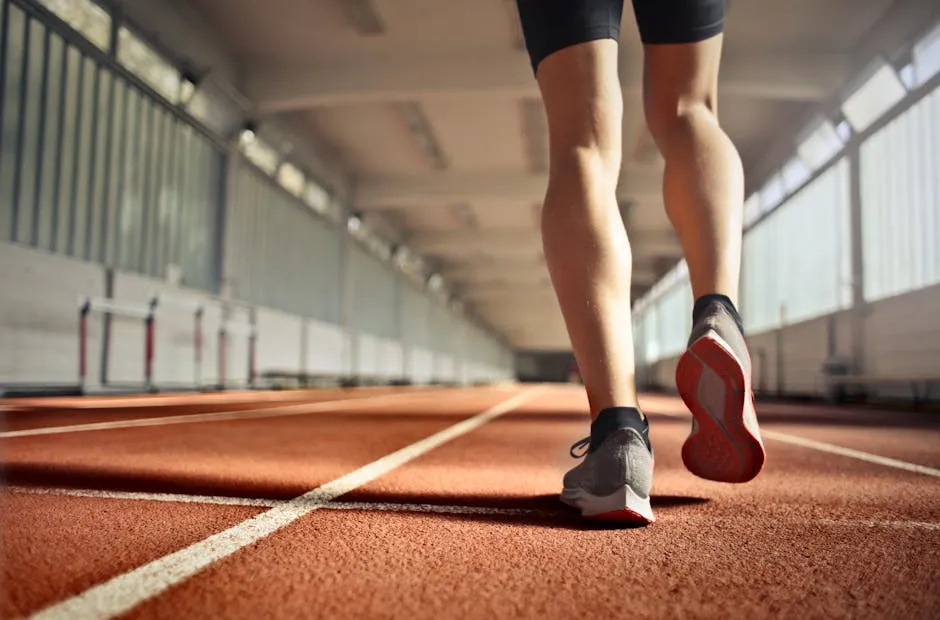
Incorporate routine rituals before competing. Whether it’s listening to music, stretching, or a specific warm-up, these routines can signal to your body that it’s time to perform. Consistency builds familiarity, which can reduce anxiety.
Support Systems
Building a strong support system is crucial. Coaches, teammates, and mental health professionals can make a significant difference. Coaches should encourage open conversations about anxiety. When athletes feel heard, it can alleviate some of the pressure.
Teammates can also provide camaraderie. Sharing experiences can foster a sense of belonging. Knowing that others face similar struggles can make anxiety feel less isolating. For those moments of solitude, consider using a Weighted Blanket for Anxiety Relief.
Involving mental health professionals is equally important. They can offer tailored strategies and coping mechanisms. Professional support ensures athletes have the tools to manage their anxiety effectively.

Creating an environment that encourages discussions about anxiety is vital. When athletes feel safe expressing their feelings, it fosters healthy coping strategies. This kind of support can lead to improved performance and mental well-being.
In conclusion, managing anxiety in competitive environments requires a mix of mental techniques, physical preparation, and robust support systems. By implementing these strategies, athletes can transform their nerves into a source of energy and focus, setting the stage for success.
Conclusion
Nervousness is a common companion for athletes. It often shows up uninvited during high-stakes competitions. Yet, understanding its effects on performance can transform this unwelcome guest into a helpful ally. When athletes grasp the triggers of their anxiety, they unlock the door to effective management strategies. This awareness is crucial in a world where the stakes are high, and every moment counts.

Recognizing the symptoms of nervousness can be a game changer. Cognitive distractions, physical sensations like increased heart rates, and emotional responses can all contribute to performance dips. But fear not! By identifying these manifestations, athletes can take proactive steps to regain focus. Utilizing techniques such as deep breathing, visualization, and positive self-talk can create a mental environment conducive to peak performance.
Moreover, mental health must be prioritized in competitive settings. Coaches, teammates, and support systems have an essential role in fostering an atmosphere where anxiety is understood, not stigmatized. This supportive environment encourages open discussions about mental challenges, allowing athletes to feel less isolated in their struggles. When anxiety is approached with empathy and understanding, it can be transformed from a debilitating force to a manageable aspect of the athletic experience.
As we venture further into the competitive landscape, let’s remind ourselves that nervousness is not the enemy. It’s a natural part of the process. Athletes can learn to channel their nervous energy into focused performance. With the right tools and mindset, they can turn butterflies in their stomach into fuel for success. Embracing anxiety as a part of the journey allows for growth, resilience, and ultimately, achievement in sports.
FAQs
What are the common symptoms of performance anxiety?
Performance anxiety can manifest in various ways, affecting athletes on cognitive, physical, and emotional levels. Cognitively, athletes may experience racing thoughts and doubts about their abilities. Physically, symptoms can include increased heart rate, muscle tension, and sweating. Emotionally, athletes might face feelings of inadequacy and fear of failure. Recognizing these symptoms is crucial for effective management.
How can athletes differentiate between helpful and harmful anxiety?
The Yerkes-Dodson Law provides insight into this differentiation. It suggests that a moderate level of anxiety can enhance performance, while excessive anxiety can hinder it. Athletes can benefit from recognizing their personal optimal anxiety levels. By understanding how anxiety influences their focus and performance, they can learn to embrace a little jitters while managing overwhelming feelings.
Are there specific techniques for young athletes to manage anxiety?
Young athletes can employ age-appropriate strategies such as practicing mindfulness and visualization techniques. Teaching them to focus on their breathing can help ground them during competitions. Encouraging open communication with coaches and teammates about feelings of anxiety can also make a significant difference. Engaging in regular physical activity and establishing a routine can help build confidence and reduce anxiety as well.
What role do coaches play in managing athlete anxiety?
Coaches are pivotal in creating a supportive environment for athletes. Their ability to foster open communication encourages athletes to express their fears and concerns. By implementing strategies that prioritize mental health, coaches can help athletes develop coping mechanisms for anxiety. Providing positive reinforcement and emphasizing effort over outcome can also alleviate pressure, allowing athletes to perform better.
Can performance anxiety ever be beneficial?
Interestingly, some degree of anxiety, often referred to as “eustress,” can enhance performance. This type of anxiety can lead to increased focus and motivation, pushing athletes to perform at their best. The key is finding the right balance between helpful and harmful anxiety. When athletes learn to channel their nerves constructively, they can turn potential obstacles into stepping stones for success.
Please let us know what you think about our content by leaving a comment down below!
Thank you for reading till here 🙂
All images from Pexels




